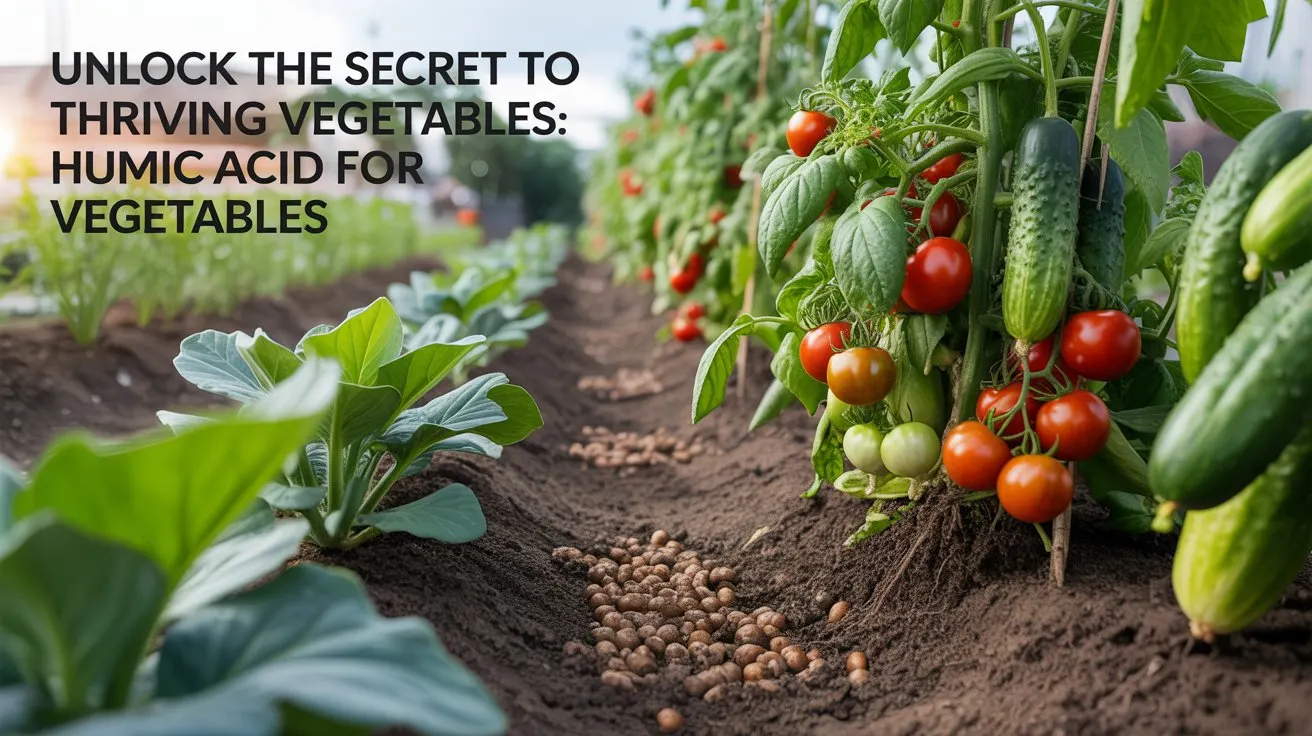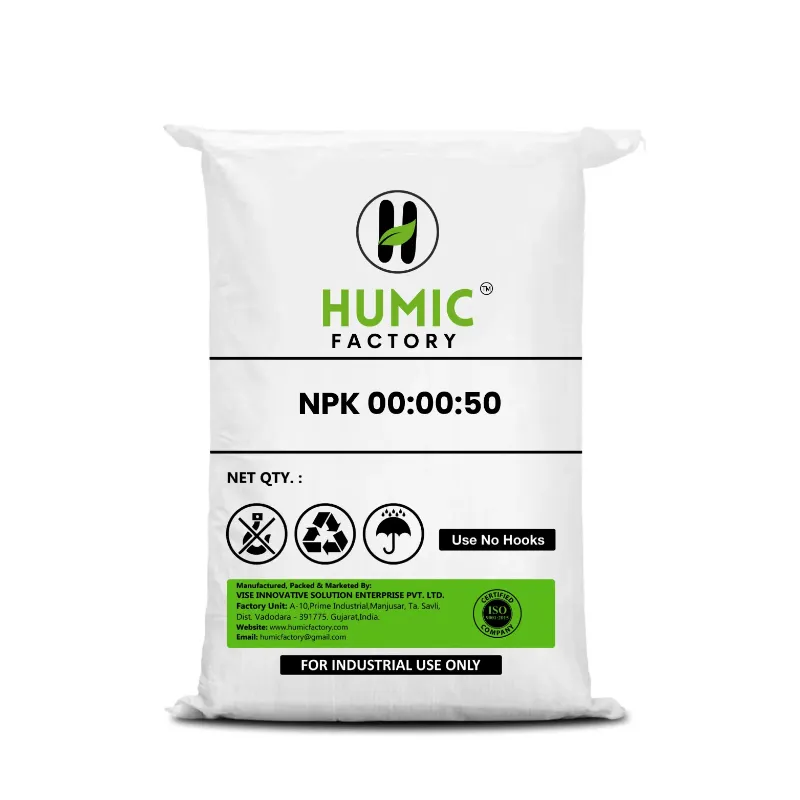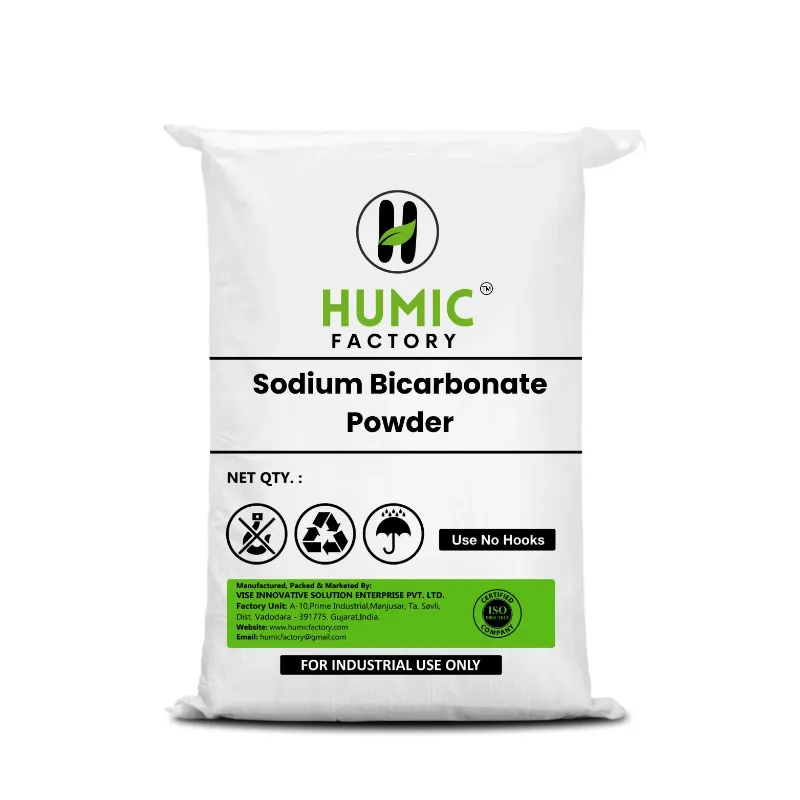Humic acid for vegetables is changing the way gardeners and farmers feed their crops. Humic acid acts as a natural soil amendment to help improve nutrient availability and absorption in the root zone. The use of humic acid leads to improved and healthier plant growth with healthier soil conditions resulting in increased plant yield. Humic acid is an excellent option for growing vegetables organically and more effectively.
One of the reasons humic acid for vegetables is successful is due to its ability to improve soil structure and enhance microbial activity. The microbial communities are important in breaking down organic matter and releasing nutrients to plants that are easier to absorb. When vegetables are grown with the support of humic acid, there is increased root development, increased cadmium tolerance, increased levels of CO2 and elevated levels of weed resistance even when weeds are present.
Similar to root crops grown, potatoes can also be improved through the use of humic acid for optimising potato cultivation. The use of humic acid improved tuber size and quality with increased deep rooting and less nutrient competition from the crops. The natural carbon compounds such as humic acid enriched soils resulting in uniform growth of both potatoes and cabbage which may increase resistance to soil-borne diseases. This allows for increased yield and support for market-grade potatoes, in addition to improving the efficiency of improving yield.
Introduction: Why Humic Acid is a Game Changer for Vegetable Gardens
Humic acid for vegetables has become a natural, efficient and sustainable option for garden growth and soil health in today’s gardening. Whether the focus is leafy greens, root vegetables or fruit, humic acid works with the most important part of any garden, your soil. Enhancing the availability of nutrients, improving soil structure and providing nutrients to beneficial micro-organisms makes humic acid a useful tool when growing organic and chemical-free vegetables.
What Is Humic Acid and Its Role in Vegetable Gardening
Humic acid is a carbon molecule that has an organic complex and is formed from the decomposition of plant and animal matter. In vegetable gardening humic acid acts as a soil conditioner and a nutrient activator. Humic acid applied to soils binds with important plant nutrients, nitrogen, phosphorus and potassium and makes them more available to vegetable plants.
Humic acid is especially important for vegetables as they are heavy feeders and require consistent access to nutrients for optimum growth. Humic acid improves the cation exchange capacity (C.E.C.) of the soil, allowing it to hold onto nutrients and nutrients, making it a great option for sands and exhausted soils.
Benefits of Humic Acid for Soil and Plant Health
Humic acid helps enhance soil porosity and aeration, and they will provide a better environment for crops that develop roots deep within the soil, such as carrots, spinach, and tomatoes.
- Stimulates Microbial Action: Healthy bacterial and other microbiological activity in the soil is a critical attribute of a vigorous vegetable crop. Humic acid feeds the beneficial microbes in the soil which then helps convert nutrients into forms that are more readily absorbable by plants.
- Improves the Uptake of Nutrients: Humic acid will chelate minerals and micronutrients to help the vegetables to more efficiently absorb the nutrients they need and thus develop better flavour, higher yield and stronger plants.
- Irrigation: Vegetables require moisture. Humic acid will assist with soil moisture retention over a longer period to lessen the need for repeated irrigation, but also improve drought tolerance.
- Reduce Leaching of Nutrients: In areas where there are high levels of rainfall, the leaching of nutrients from the soil can have negative consequences for vegetable crops. Humic acid can hold on to nutrients making them available for a longer period to plant roots.
Why Gardeners Choose Humic Acid for Vegetables Over Chemicals
Numerous gardeners have begun replacing chemical fertilizers with humic acid for vegetables because of its natural or organic and beneficial nature. In contrast to synthetic inputs that can rob the soil, humic acid increases soil health over time and it builds sustainable productivity.
- Humic Acid for Potato: Humic acid is very useful in the soil for a potato crop. It stimulates uniform tuber growth, increased tuber size and quality, and reduced sensitivity to pests and diseases by enhancing the plant's innate defenses.
- Humic Acid for Onion: Onion crops benefitted from the humic acid by producing better bulb formation, healthier roots, and increased utilization of nutrients to develop larger, flavorful onions with a longer shelf life.
- Safe and Sustainable: Humic acid is different from synthetic fertilizers that can harm young plants and be damaging to land. Humic acid is gentle on a plant's roots and it is very safe to use with continuous use on young plants.
- Better Taste and Nutrition: Planting vegetables into a humic-rich soil can result in better color, flavor, and nutritional quality due to improved uptake from the nutrient-rich content available in the humic-rich growing media.
The Science Behind Humic Acid: How It Works Wonders for Your Vegetables
Humic acid for vegetables is an organic package that turns the root zone into a powerhouse of biological activity. Humic acid is obtained from decayed organic matter such as leonardite which increases soil fertility and plant strength by modifying soil's physical, chemical, and biological properties.
- Improved Soil Structure: Humic acid breaks up hardened soil and improves porosity allowing vegetable roots to go deeper in the soil making them access more water and nutrients.
- Chelation of nutrients: Humic acid binds with soil trace minerals such as zinc, iron, and magnesium, changing those nutrients to a form the vegetable can take in quickly, and simply as in spinach, carrots, and broccoli.
- Buffer against toxins: Humic acid neutralizes the toxins and heavy metals that could impact the growth of vegetables, and puts food production in a safer soil context.
Soil Microbial Boost and Nutrient Cycling Explained
One positive benefit of humic acid for vegetables is its ability to stimulate microbial activity. Microbes are responsible for breaking down organic matter and releasing nutrients into the soil, and beneficial microbes are the ones we want to boost.
- Microbial Activation: Humic acid feeds soil microbes, including bacteria and fungi, which decompose organic material and make nutrients available to vegetables.
- Improved Nutrient Cycling: These microbes also participate in nutrient cycling—transforming nitrogen, phosphorus, and sulfur into plant-available forms.
- Healthier Soil Ecosystem: As the microbial population increases, the soil becomes a living entity that supports help the plant resist disease and develop healthy roots.
Humic acid can help form stronger tubers and reduce the effects of soil-borne diseases in root crops such as potatoes, while providing soil aeration. To accelerate the development of onion bulbs, humic acid also promotes improved underground bulb structures that result in improved healthy harvest of bulbs and reduced risk of disease or pest problems.
Enhanced Nutrient Uptake in Vegetable Roots
Vegetables utilize both macro and micronutrients in order to thrive , for example, humic acid used for vegetables acts as a nature-delivery system that makes it easier and faster for the roots for vegetables to absorb nutrients.
- Humic acid encourages root elongation & branching which will allow the vegetable plant to absorb nutrients more effectively by increasing surface area.
- Humic acid gives vegetables more effective nutrient uptake, which will subsequently cause vegetables to be able to grow faster, develop a deeper color, and have higher nutritional density.
- In target vegetable crop experiments using humic acid, such as potatoes, it resulted in more uniform development of tubers. With onions, it improved sulfur absorption which is very important because it is a key nutrient for the flavour of the onions.
Overall, this meant that humic acid allows for more effective uptake of nutrients and ensures that each type of vegetable reaches its full genetic potential and in the meantime reduces dependence on chemical fertilizers.
Humic Acid and Its Role in Sustainable Organic Gardening
As the concept of organic and eco-conscious farming gains popularity, humic acid for vegetables has emerged as an essential input for ecologically sustainable gardening.
- Reduced Dependency on Chemicals: Humic acid decreases the need for synthetic fertilizers and pesticides by naturally enhancing nutrient availability and soil health.
- Environmental Stewardship: Humic acid reduces nutrient runoff and groundwater contamination, making it an excellent fertilizer for environmentally responsible growers and commercial organic farms.
- Soil Health Over Time: Humic acid adds organic matter to the soil through time - making soils more fertile, balanced, and resilient over time.
Whether growing a few crops in your backyard organic garden or all the crops in a commercial organic farm, the use of humic acid on potato and humic acid on onion plant to improve your crop yield means years of ecological sustainability for your crops, soil, and environment.
Top Benefits of Using Humic Acid for Vegetables
Humic acid is increasingly becoming a must-have for home gardeners and organic farmers alike. When used in vegetable cultivation, humic acid for vegetables works as a natural soil conditioner, growth enhancer, and nutrient booster. Whether you’re growing leafy greens, root crops like potatoes, or bulbs like onions, humic acid delivers visible improvements in plant health and productivity.
Let’s explore the top benefits of integrating humic acid into your vegetable gardening routine.
Improves Root Development and Overall Growth
Healthy roots are the foundation of thriving vegetables. Humic acid enhances the root environment in several impactful ways:
- Stimulates Root Growth: Humic acid stimulates elongation and branching of roots, which allows vegetables to access more water and nutrients.
- Reduces Root Stress: In adverse weather or poor soil conditions, humic acid supports stress tolerance by promoting stronger root systems.
- Ideal for Root Vegetables: For root crops like potatoes, a well-developed root system translates directly into better tuber formation, uniform size, and increased yield.
- Bulb Boost in Onions: When used as humic acid for onion crops, it improves root strength, which supports the development of firm, healthy bulbs with better resistance to diseases.
This improved root architecture helps ensure vegetables grow quickly, evenly, and with higher resilience to environmental stress.
Boosts Nutrient Absorption and Soil Fertility
Humic acid acts as a catalyst for better nutrient uptake, making your vegetables healthier and more productive without excessive use of synthetic fertilizers.
- Chelates Micronutrients: Humic acid binds to minerals like iron, zinc, and magnesium, converting them into forms easily absorbed by vegetable roots.
- Improves Soil Fertility: Regular use of humic acid for vegetables enriches the soil with organic matter and enhances microbial activity, creating a nutrient-rich growing medium.
- Better Nutrient Density: Vegetables treated with humic acid often have higher levels of vitamins, minerals, and antioxidants.
- Specific Crop Benefits: For example, humic acid for potato helps improve phosphorus uptake—crucial for energy transfer and tuber growth. In onions, humic acid supports sulfur metabolism, improving both flavor and shelf life.
These combined effects lead to nutrient-rich soil and highly productive plants season after season.
Enhances Water Retention and Drought Resistance
Water management is crucial for a successful vegetable garden, especially in areas with irregular rainfall. Humic acid helps optimize soil moisture and protects plants against drought stress.
- Improves Soil Texture: Humic acid enhances soil porosity and aggregate formation, allowing better water infiltration and holding capacity.
- Reduces Water Stress: With more water available at the root zone, vegetables experience less stress during dry periods.
- Ideal for Dry Regions: Gardeners using humic acid for onion in dry climates have reported healthier plants and less frequent watering needs.
- Supports Sustainable Gardening: By improving water use efficiency, humic acid allows you to grow vegetables with lower irrigation input—an essential benefit for eco-conscious gardeners.
In summary, humic acid not only boosts your plants' access to water but also ensures they can make the most of every drop.
Humic Acid for Potato and Onion Crops
In modern and organic vegetable farming, humic acid has proven to be a transformative input—especially for root and bulb crops. Using humic acid for vegetables such as potatoes and onions improves not only the quality of the produce but also enhances soil health and productivity. Its ability to stimulate biological activity, improve nutrient availability, and enhance soil structure makes it ideal for underground crops that depend heavily on soil interaction.
Humic Acid for Potato: Tuber Size, Root Growth, and Yield
Potatoes require a robust root system and nutrient-dense soil to form well-developed, uniform tubers. Humic acid for potato crops offers the following advantages:
- Increased Tuber Size and Weight: Humic acid enhances phosphorus availability, crucial for energy transfer and starch formation, leading to larger and denser tubers.
- Stronger Root Systems: It stimulates root branching and depth, which improves nutrient uptake and water absorption.
- Yield Boost: Trials show that potato fields treated with humic acid see a notable increase in yield—both in volume and quality.
- Disease Resistance: Healthy root systems are less vulnerable to soil-borne diseases, which is vital for potatoes susceptible to root rot and blight.
When used consistently, humic acid builds a soil environment where potato crops can thrive with improved resilience and productivity.
Humic Acid for Onion: Bulb Formation and Soil Conditioning
Onion growth depends on proper bulb development and nutrient availability—especially sulfur and potassium. Using humic acid for onion cultivation helps in several impactful ways:
- Enhanced Bulb Size and Uniformity: Humic acid improves nutrient uptake, leading to fuller and well-rounded onion bulbs.
- Improved Sulfur Utilization: Sulfur, key to onion flavor and shelf life, becomes more available through the chelating action of humic acid.
- Soil Structure Conditioning: Onions require loose, well-drained soil. Humic acid improves aeration and aggregation, reducing soil compaction around bulbs.
- Better Root Anchoring: A well-anchored root system prevents lodging (toppling) during bulb development stages.
Thus, humic acid offers a dual advantage—nurturing both the plant and the soil it grows in.
Best Application Practices for Root Vegetables Using Humic Acid
For the best results when applying humic acid for vegetables, especially root crops like potatoes and onions, follow these proven practices:
- Pre-Planting Soil Preparation: Incorporate humic acid into the soil before planting to condition the ground and activate microbial life.
- Seedling Stage: Apply a diluted solution of humic acid around the base of seedlings to encourage early root development.
- Foliar Spray or Soil Drench: Both methods are effective, but soil drenching is particularly beneficial for root crops to deliver nutrients directly to the root zone.
- Recommended Dosage:
- For potatoes: 3–5 kg per acre (granular) or 2–3 liters per acre (liquid humic acid) applied at planting and again after 30 days.
- For onions: 2–4 kg per acre (granular) or 1.5–2 liters per acre (liquid) split across 2 applications.
- Combine with Fertilizers: Humic acid acts as a nutrient carrier. Mix it with phosphorus- or potassium-based fertilizers to boost their effectiveness.
These best practices help unlock the full potential of humic acid for potato and humic acid for onion crops while promoting long-term soil fertility.
How to Apply Humic Acid in Your Vegetable Garden for Maximum Results
Applying humic acid for vegetables is a straightforward yet effective way to boost crop performance. Whether you're growing leafy greens or root vegetables like potato and onion, correct application ensures the best possible results.
- Pre-Planting Application: Work granular humic acid into the soil during bed preparation. This conditions the soil, improving texture and microbial activity.
- At Transplanting or Seeding: For young seedlings or direct-seeded crops, apply liquid humic acid as a soil drench to help with early root establishment.
- Foliar Spray During Growth: Foliar sprays allow plants to absorb humic acid through leaves, especially useful during critical growth stages like tuber or bulb formation.
For crops like humic acid for potato and humic acid for onion, targeting root zones is essential, so soil drenching remains the preferred method.
Choosing Liquid vs. Granular Humic Acid for Vegetables
Understanding the form that best suits your needs is key when using humic acid for vegetables.Liquid Humic Acid is excellent for vegetables that require rapid nutrient uptake like leafy greens or quick-growing root crops.
- Granular Humic Acid works well for potato and onion, which benefit from slow-release effects and improved soil structure.
Choose a form based on your garden’s specific needs and the crop cycle you're working with.
Application Frequency and Timing for Optimal Results
The success of humic acid for vegetables depends on how often and when you apply it.
- Pre-Season Application: Apply granular humic acid 1–2 weeks before planting to condition the soil.
- Early Growth Stage: Use liquid humic acid once seedlings are established—typically 10–15 days after planting.
- Mid-Growth: Reapply liquid form during critical nutrient demand periods—bulking phase for potato and bulb formation for onion.
- Every 15–20 Days: Foliar or soil applications can be made bi-weekly, depending on soil health and plant response.
Consistent applications help maintain nutrient flow and microbial activity throughout the plant’s life cycle.
Integrating Humic Acid into Fertilizer or Compost Schedules
Humic acid for vegetables works best when it becomes part of your overall fertilization and soil enrichment plan.
- With Organic Compost: Mix humic acid granules into compost piles or apply together during soil conditioning to boost microbial content and decomposition.
- With Fertilizers:
- Combine liquid humic acid with water-soluble fertilizers to enhance uptake.
- Mix granular humic acid with slow-release fertilizers during soil preparation.
- Crop-Specific Integration:
- For humic acid for potato, pair with phosphorus and potassium fertilizers for better tuber development.
- For humic acid for onion, blend with sulfur-rich amendments to support bulb formation.
The synergy of humic acid with compost and fertilizers not only improves efficiency but also supports long-term soil regeneration and plant health.
FAQs
Q1. What is humic acid and how does it help vegetables?
Humic acid for vegetables is a natural soil conditioner that improves soil structure, enhances nutrient absorption, and supports strong root growth, leading to healthier and more productive plants.
Q2. Can I use humic acid for potato crops to increase yield?
Yes, humic acid for potato crops promotes better root development, nutrient uptake, and tuber growth, resulting in improved yield and overall plant health.
Q3. Is humic acid effective for onion growth and bulb quality?
Absolutely. Humic acid for onion enhances soil fertility, supports bulb formation, and improves nutrient availability, which leads to better size, taste, and storage quality.
Q4. How often should I apply humic acid for vegetables?
Apply humic acid for vegetables every 2 to 3 weeks during active growth stages. Adjust frequency based on soil condition, crop needs, and whether you’re using liquid or granular form.
Q5. Which is better: liquid or granular humic acid for vegetables?
Both forms work well. Liquid humic acid for vegetables offers faster absorption, while granular humic acid provides long-term soil improvement. Choose based on crop type and gardening goals.
Conclusion: Take Your Vegetable Gardening to the Next Level with Humic Acid Today!
Humic acid for vegetables is more than just a soil supplement—it's a powerful natural enhancer that transforms how your plants grow and thrive. Whether you're nurturing leafy greens, root crops like potatoes and onions, or seasonal vegetables, incorporating humic acid into your gardening routine delivers lasting benefits.
Boost Growth Naturally
- By improving soil structure and encouraging microbial activity, humic acid for vegetables creates an optimal environment for robust plant development. You'll notice faster root expansion, healthier foliage, and stronger overall plant vitality without relying heavily on synthetic chemicals.
Higher Yield for Root Crops
- Using humic acid for potato cultivation leads to larger tubers and stronger roots, ensuring a better harvest. Similarly, applying humic acid for onion improves bulb size and soil conditioning, directly contributing to both quality and quantity.
Sustainable and Easy to Use
- Whether in liquid or granular form, humic acid integrates easily into your existing routine. It complements organic compost and fertilizers, enhances nutrient efficiency, and reduces input waste—making your vegetable garden more sustainable and eco-friendly.





